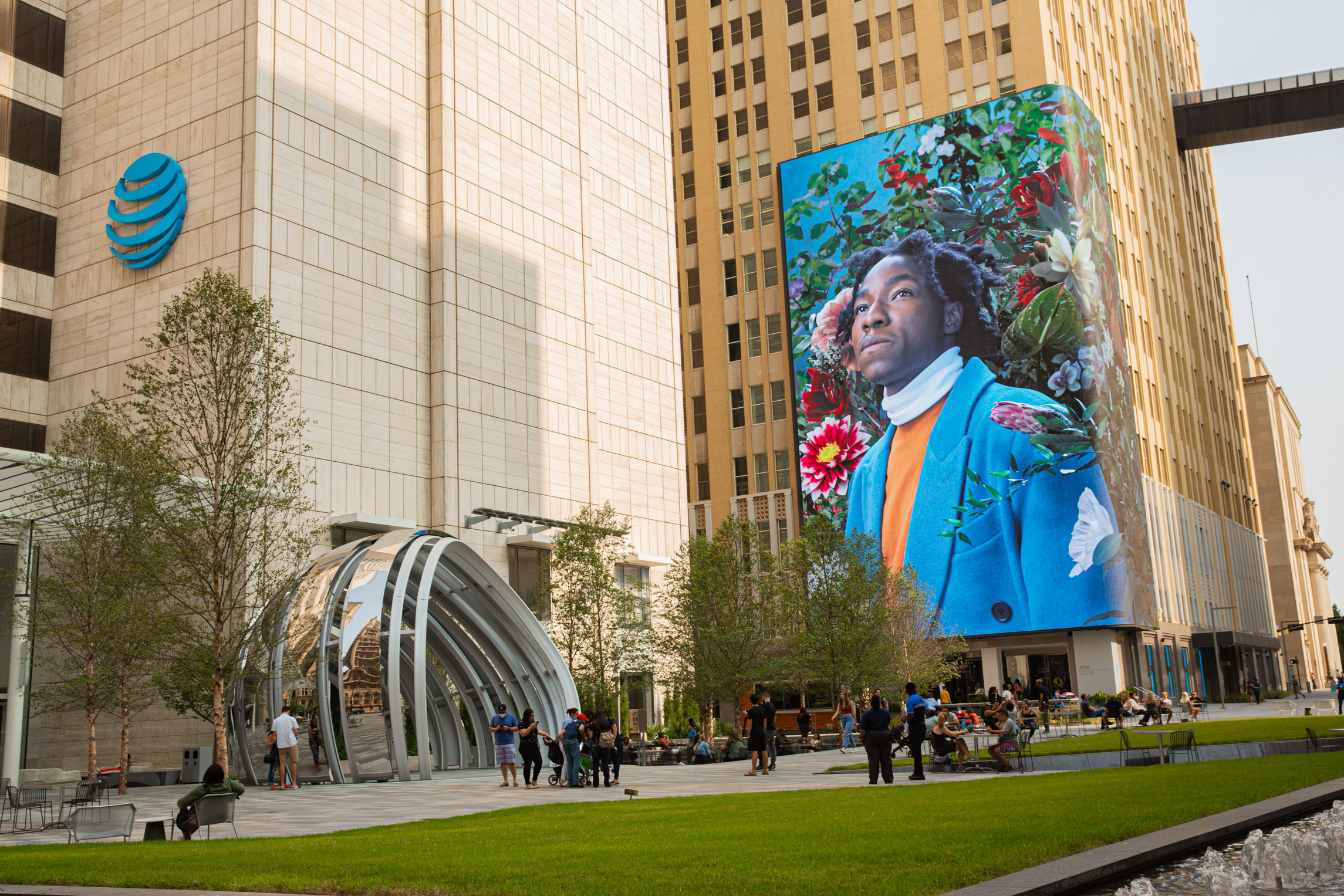Inspiration
Meow Wolf x Britelite Immersive
Jul13
Shared By Michael Itkoff
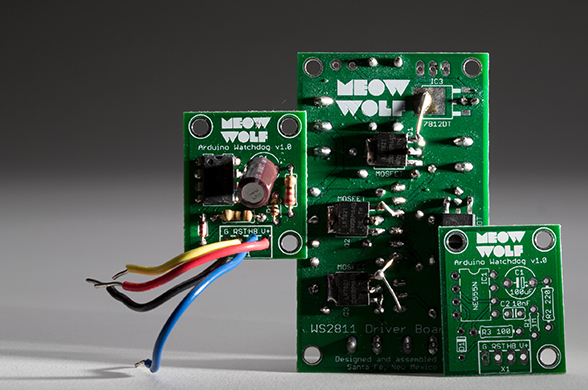
At Britelite we pride ourselves on our innovation and we have recently created a new blog series interviewing thought leaders who motivate us to keep things fresh. This week, we profile Meow Wolf, an arts collective out of Santa Fe whose work lies at the intersection of immersive and interactive art and whom we always keep an eye on for inspiration. Meow Wolf's recently launched 'Omega Mart' in Las Vegas has been an international hit and a social media sensation. The new installation is filled nook to cranny with a textual, colorful, immersive and interactive walkthrough experience for the whole family. It is likely one of the best presentations we have seen of wild art concepts transforming space. We are super fans of Meow Wolf and, after checking out this interview with Meow Wolf Cofounder Vince Kadlubek and Britelite Cofounder Justin Gelinas, we are sure you will be one too!
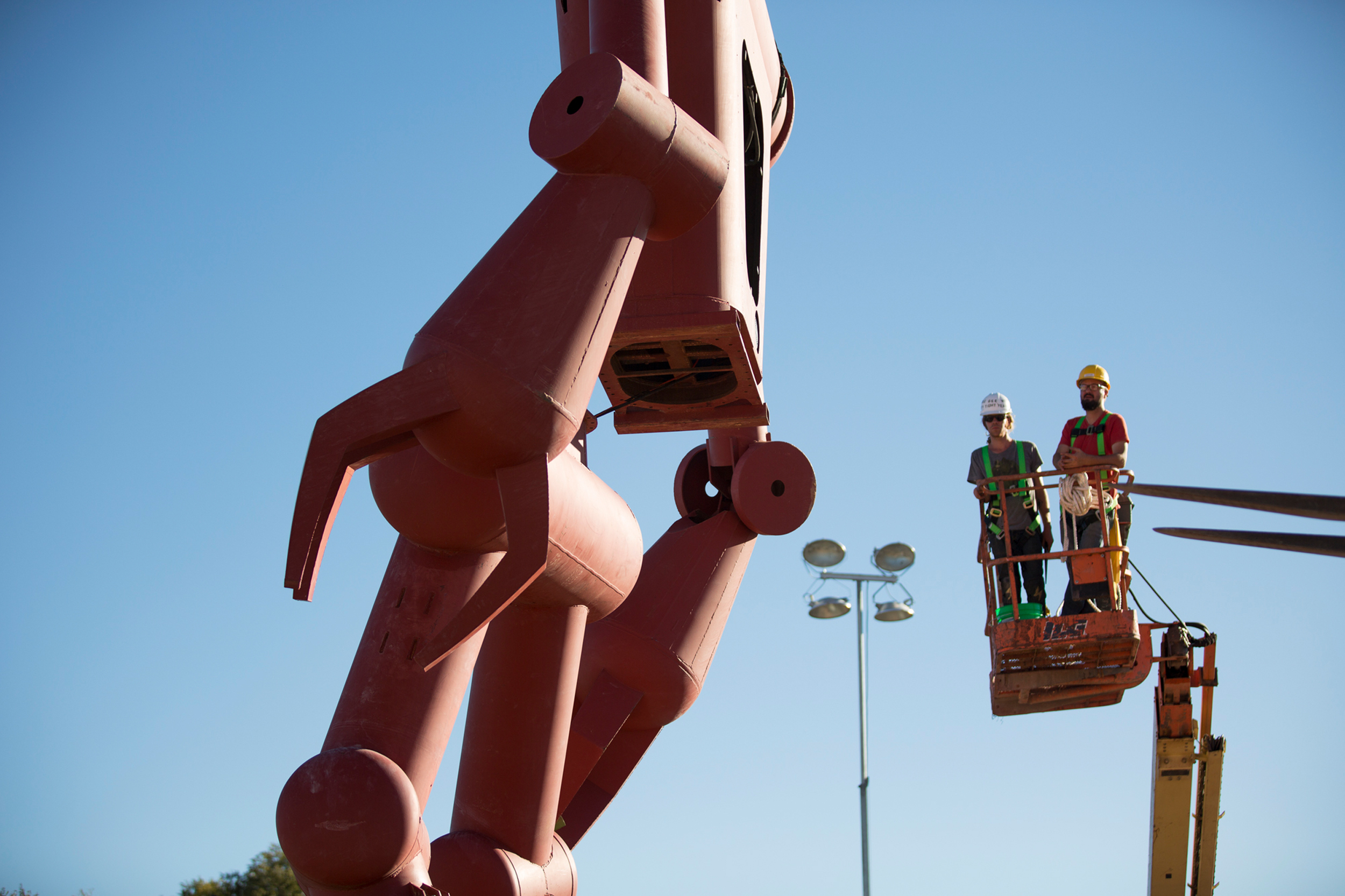
Before getting started do you mind sharing what your name is, what is it that you do, and what fuels you?
My name is Vince Kadlubek, co-founder and director of Meow Wolf, I also have a consulting agency called Spatial Activations. What I'm most interested in is the experience of life and expanding and making more interesting and more imaginative experiences here on this planet; largely location based experiences, physical in-person experiences. I also like digital experiences too. I love my iPhone. I love the Internet. But to me the world around us, the outside world, the physical world, the programming that happens in the physical world has so much opportunity, so much potential and has been neglected for the past 30 years. Since all the programming skills have gone towards digital technologies and digital platforms, there has been this kind of like ignoring or forgetting of the physical world that we live in, and so I'm mostly interested in the creative and imaginative programming of the physical world.
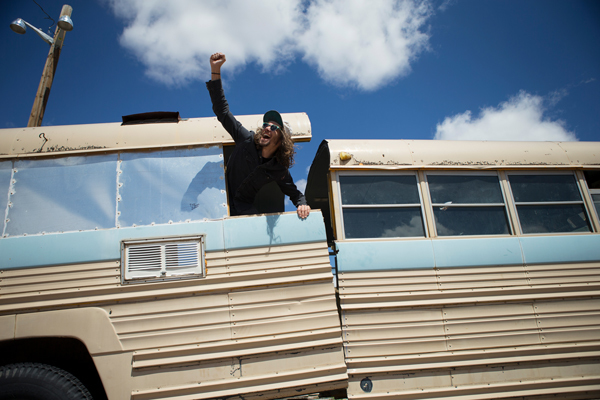
We get really excited about the confluence of physical and digital. Sometimes we call it the phygital space. Let's start at the ground floor and talk about Meow Wolf, what it is, how it came to be...
We are an arts production company that produces large scale immersive multimedia exhibitions and we're based in Santa Fe, New Mexico. We have a few permanent exhibitions. We have one in Santa Fe called the House of Eternal Return which opened in 2016. That's an eighteen thousand square foot immersive multimedia experience that is all based on physical art, art that's right in front of you, and storytelling. We also have a fifty thousand square foot experience in Vegas called Omega Mart that just opened a couple of months ago, and then the third one is on its way. It is going to be in Denver and opens at the end of the year and is even larger than the Las Vegas one. So those are the primary component products of the company at this point. We evolved out of an art collective when we were here in Santa Fe, New Mexico, back in 2008. We were just a bunch of friends, a social group in our 20s. We were artists and we were programmers and event producers trying to make a name for ourselves, trying to become a part of the cultural conversation in Santa Fe where I was born and raised. I've always loved the sort of fringe freak art, psychedelic art side of Santa Fe that we weren't seeing much of in the actual expression of the city.

We just felt like we deserved to be part of that fabric, part of that conversation. So we started an art collective and it was really just like a clubhouse where people pitched in to pay rent and for materials. We pulled stuff out of dumpsters and made a bunch of weird environments out of trash, essentially. Then we invited people into those environments, asked for donations and it continued to evolve from there. We were also producing music events inside of the space, which were always at the core of that group. We essentially did that for six or seven years, various successes, various failures, lots of failures. And we were basically ready to move on with our lives. What was a passion project in our twenties had become an obligation in our thirties, and we were feeling like, what are we doing with our lives? We all have to go get careers because this is not going to work. So we made one last ditch effort that was like, all right, let's try to do a business in a way that can be sustainable to us.
So we found an empty bowling alley that had been empty for five or six years here in town, and I pitched it to George R.R. Martin, who is the author of Game of Thrones, and is a resident here. He owns a movie theater and I worked with him there. And I just said, “Hey, George, there's this bowling alley. Do you want to buy it? If you buy it, you can rent it to us. We will do this crazy project in there.” And he said, “Yeah!” So then we raised the money and pulled the team together and attempted to do our first business. And that's the project that we have in Santa Fe called the House of Eternal Return which opened in 2016. It's just been a crazy success ever since we opened. Hundreds of thousands of people every year come through the door and it has brought the ability to raise money, expand the company and expand into other markets. We sell merchandise and we do entertainment storytelling but the primary thing that we focus on are the exhibitions. We also have a social mission and we are all about supporting access to creativity and access to creative tools for marginalized communities.
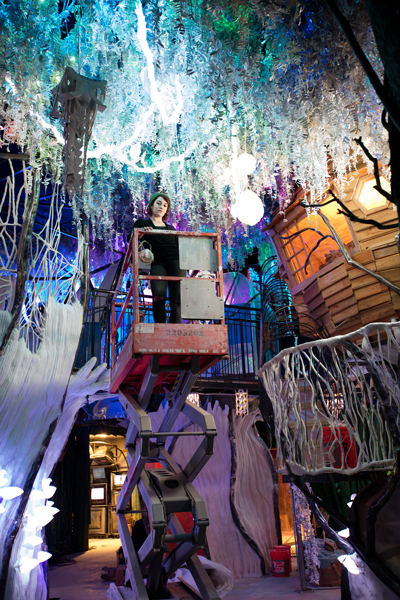
You guys were doing stuff that was ahead of the curve in a lot of ways. People wanted it, they just didn't know that they wanted it because it wasn't as readily available. Some people may have been exposed to Sleep No More or Speakeasy Dollhouse. Was that stuff on your radar as you were developing these types of environments, or were you just doing your own thing?
In 2008, when we first started and we did our first couple of music shows, we really felt like we were doing what nobody else was doing. We were creating these environments to hang out in and explore. I don't really think anybody was really doing that. The closest comparables we had were maybe haunted houses or Disneyland and theme parks. Pretty quickly, though, within the first couple of years, a couple of the founders of Meow Wolf went to St. Louis and saw the city museum. City Museum was a really eye opening experience for us because it was like, “whoa, someone did this on a very big scale and it's amazing and it's art, but it's also a playground,” Which was very influential for us. We also learned that the City Museum was a for profit business and that was like a light bulb went off for us at that point like, “Oh, this can actually be a successful attraction”. We were also tracking Yayoi Kusama, Team Lab and the immersive exhibits that were taking over the art world and showing a lot of profitability and success.
We knew that there were those data points and then we started to get into immersive theater with Sleep No More. That was a bit late, we knew about them, but we actually didn't experience them until like 2017. We knew we were part of a cultural movement, but our influence was more punk rock, DIY spaces like Lightning Bolt or Fort Thunder. There were places in Austin that we would visit or Denver’s Rhinoceropolis. We're probably more influenced by those types of scenes where it was like community and music and art and political activism that was more so the influence rather than attraction's.
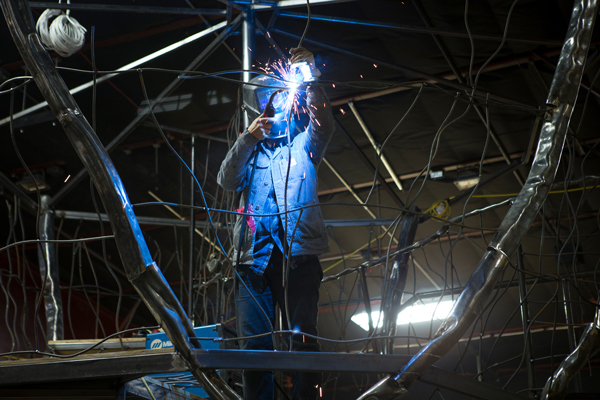
We'll get into the experience economy and how things have evolved since 2016 soon. Before that, I wanted to hear your thoughts on where you think things are going. In the early years when you were rejected by the traditional art scene that you described earlier, does that still drive you in a way? Deep down, is there something that's just like “I told you guys that we were going to do something big”? Is there something that fuels the fire from those early days that still exists and continues to be a part of your influence and your inspiration?
I think that we live within that context. We care a lot about the everyday person, we care a lot about the ninety-five percent of people who are alienated by the art world. I would say it's less about the five percent of the art world and it's more about the ninety five percent of other people. We try not to make it about what we're not. We try to make it about what we are. Do we care about being part of the art world conversation? I think we definitely do. It is almost more relevant to not be part of that conversation or to be considered outside that conversation. All of our favorite movements of art in art history were not accepted as part of the art world until later when people looked back and saw it was a really important part of the story of how art evolved. So in some ways, the fact that Hyperallergic doesn't want to write about us or we don't find ourselves in The New York Times art section, it's actually kind of cool in a way, because we know that we are doing something that is extending beyond the status quo. Ultimately, the art world is only a super small fraction of our audience. So we really care about the other people out there that we think deserve to have a creative experience and they've just been alienated by the language of art and the culture of art for their entire lives.
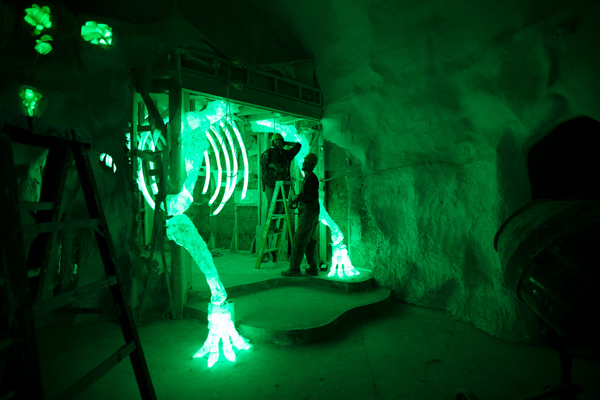
I like the idea of allowing experiences to be more attainable for everyday people. From your perspective, what is the definition of experience design or experience architecture? How do you and your team go about creating these experiences?
What I've learned from Meow Wolf and also what I've helped influence with Meow Wolf, is that when you're designing for experience, you really should be considering designing for nature. You should be using nature as your guide and I mean that in a lot of different ways. Nature is formed and defined but it's also random. Nature is identifiable, but it also transitions, it contrasts and clashes. It’s not singular, it’'s dynamic. It also is incredibly varied and diverse. You can move in nature from environment to environment to environment, and there is no story that defines why it does that. So a lot of our experience design pulls from that texture, color, depth. Nature doesn't tell you where to go like manmade paths tell you where to go. You're free to explore however you want. It's your world, it's your interpretation, you can try to place a story onto it, you can try to place meaning onto it but ultimately, at the end of the day, it's just you making choices. All of those ideas are really important parts of experience design for us. We don't think we need to do much else other than just provide a dynamic, textured, visually stunning, engaging environment, and we trust the user to do the rest.
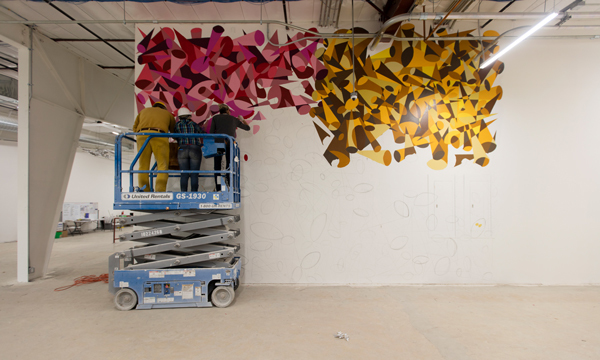
One thing I love about Meow Wolf installations is the nuance and detail everywhere that you look. The more attention that you give to each moment you realize that those moments are very intentionally stitched together as part of a bigger journey. What's your perspective around gamification as it pertains to journey mapping and the storytelling that you do?
Similar to using nature as the foundation there is risk and reward. There is achievement and there is progression. In the natural world you can go grab a bunch of sticks but rub some sticks together and you make fire. You just achieved something by your actions. Did you have to do that? Not necessarily. Did you choose to do it? Sure. We are into the optionality of achievement, of reward, of progression, of story, but it's not the entire thing. We're not trying to create an immersive theatre piece where it's all about the story. We're not trying to do an escape room, where it's all gamification. These are layers or options that people can choose to dive into if they'd like. But it's really important to leave the choice up to the participant.
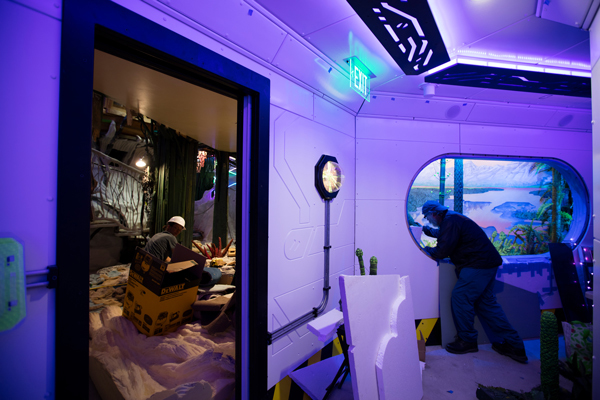
What is the experience economy and where are we within its maturation? Where do you see it going? Has Covid propelled this way of thinking about experiences?
Sure, yeah, it's accelerated a trend. Back in the 90s, two authors wrote an essay, Pine and Gilmore, called The Experience Economy in which they talked about the different progressions of where the economy has come from and where it's going. It starts with a commodity like a coffee bean. Initially the economy was around the coffee bean itself then there is some sort of good produced from that commodity. The next level would be the ground coffee bean that is now sold to you as the coffee grounds and then the next level would be the service. So then it would be the coffee grounds brewed for you and then poured into your cup at a coffee shop. Then the fourth would be the experience of when you go to a coffee shop, not because you actually want coffee, but because of the experience of being at the coffee shop where you'll buy a coffee anyway because you're there. So that's the progression and they actually added another level to it beyond experience which is transformation. People aren't just looking for an experience, they're looking for transformational experiences.
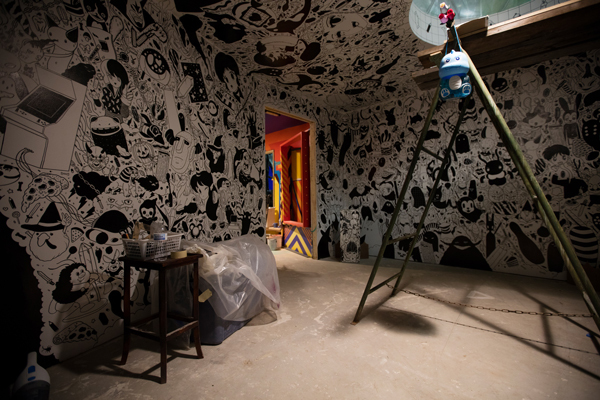
So now when we can buy whatever we want online other companies have to start thinking “If we have a retail space why would we be stocking all sorts of inventory of products when people can just buy those from our warehouse or from Amazon or from Walmart or Best Buy? What is our in-person experience like and how is it telling the story of the brand? Is the product really the story of the brand or does the brand have another expression?”
Covid has accelerated this because the question “Why do I have to leave the house for?“ is a really important question. There are only a few answers to that question, and for the most part they revolve around experiencing something that you can't experience digitally. In-person experiences are a new kind of currency. What's funny about it is that we've been focusing so much on the digital experience as a society and as venture capitalists funding institutions that the physical world lacks cool experiences. So nature has really taken over as the coolest experience and people are going on road trips to Utah, to New Mexico, to Colorado to experience nature.
There is a lot of room for urban and suburban environments to have more experiential content that you actually want to leave the house for, things that you can't get online. Things that even start to rival the type of excitement that you feel when you're on Instagram, Facebook, or YouTube and that's the thing. The overabundance of programming for the digital world and for the iPhone has produced really great content that we're now addicted to. There is a need for us to produce content out in the physical world that can actually compete with the content on our phones. Covid just completely devastated all traditional retail and devastated the movie theater industry and traditional retail is not coming back; it was already on its way out. So folks are just going to start cutting their losses and leaving their lease behind. Movie theaters are cutting their losses. Netflix had already killed the movie theater. So now you have a bunch of empty boxes around the country and no real interesting content to film. So the future of the experience economy is going to be these very segmented genres and walk-through experiences that you can only do in-person that end up filling the [empty] spaces of shopping malls.
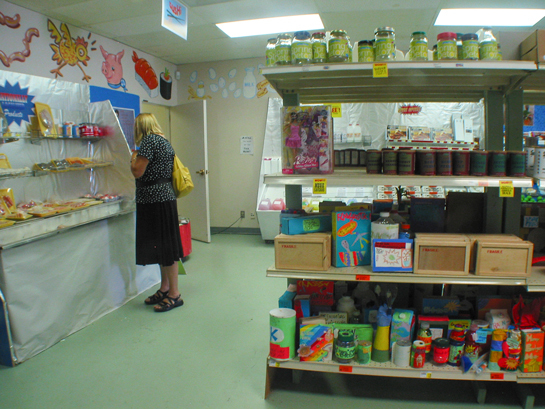
There is a term that I’m sure you are familiar with: retail-tainment. You are encroaching into that category where there has got to be an immediate dopamine rush. The retail environment has changed tremendously. What's going to get you into a physical retail environment if you can get all of those same services and goods via Amazon or other digital channels?
Yes. A lot of the thinking around experience is still behind the time. [Brands] think that they need to create an experiential space to then sell a product. The truth is the experiential space is the product. There doesn't need to be a phone at the end of the experience or a song or an album. The experience itself is the product and is what people are looking for. I see a huge amount of growth around in-person video gaming that is location based. Obviously, the whole industry of in-person music experiences as well where artists release their music via experience (rather than via these distribution platforms) in person. Then I think a big one is what we really cracked, which is the walk-through artful, creative experience, which is one of the simplest forms of experience economy. It’s like “Here is an environment, all you do is walk through it and everybody's happy.”
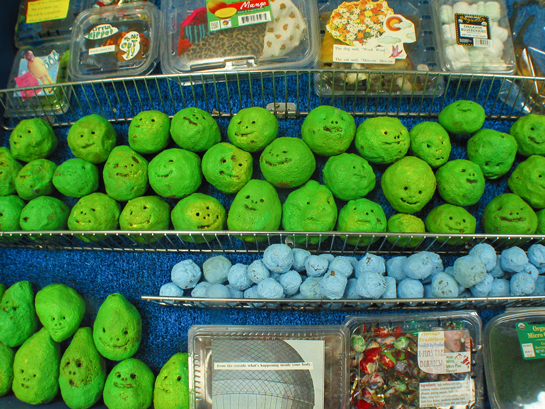
The beautiful thing about it is I could bring my six year old daughter or my eighty five year old grandfather and it'll put a smile on all of their faces.
Unlike theme parks and amusement parks you're not banking on adrenaline and sugar so you open yourself up to a lot of different types of people who are not attending theme parks.
Yeah, just looking at Universal Studios or Disney World, so much of that experience is wrapped around characters, right? Well, that's not the drawcard— it's much deeper. You are distinguishing yourself by providing a real alternative and unique insight as to why people are traditionally going to these types of environments.
I think anchoring yourself to IP on a movie screen or on a television screen or on a video game and then translating that into a physical experience is tough because then you’ve segmented your audience. It's like, “OK, well, what if I don't like Game of Thrones?” Also it's really hard for a location-based experience to match the budget and the spectacle of a movie or series. If you tried to create a Game of Thrones experience inside of a two thousand square foot space.. how do you pull that off? Unless you're incorporating LBVR into it which is a huge use case for how these boxes get taken over. You know, the best kind of VR is LBVR. If I can move around and I can touch things and I can be in a collective social space with others actually physically there but I'm in VR- that is amazing,ut you need large amounts of space to do that. I'm waiting for the first company to come out with their one-hundred-thousand square foot Sears box store replacement that puts three thousand people in a VR experience together within a shared space.
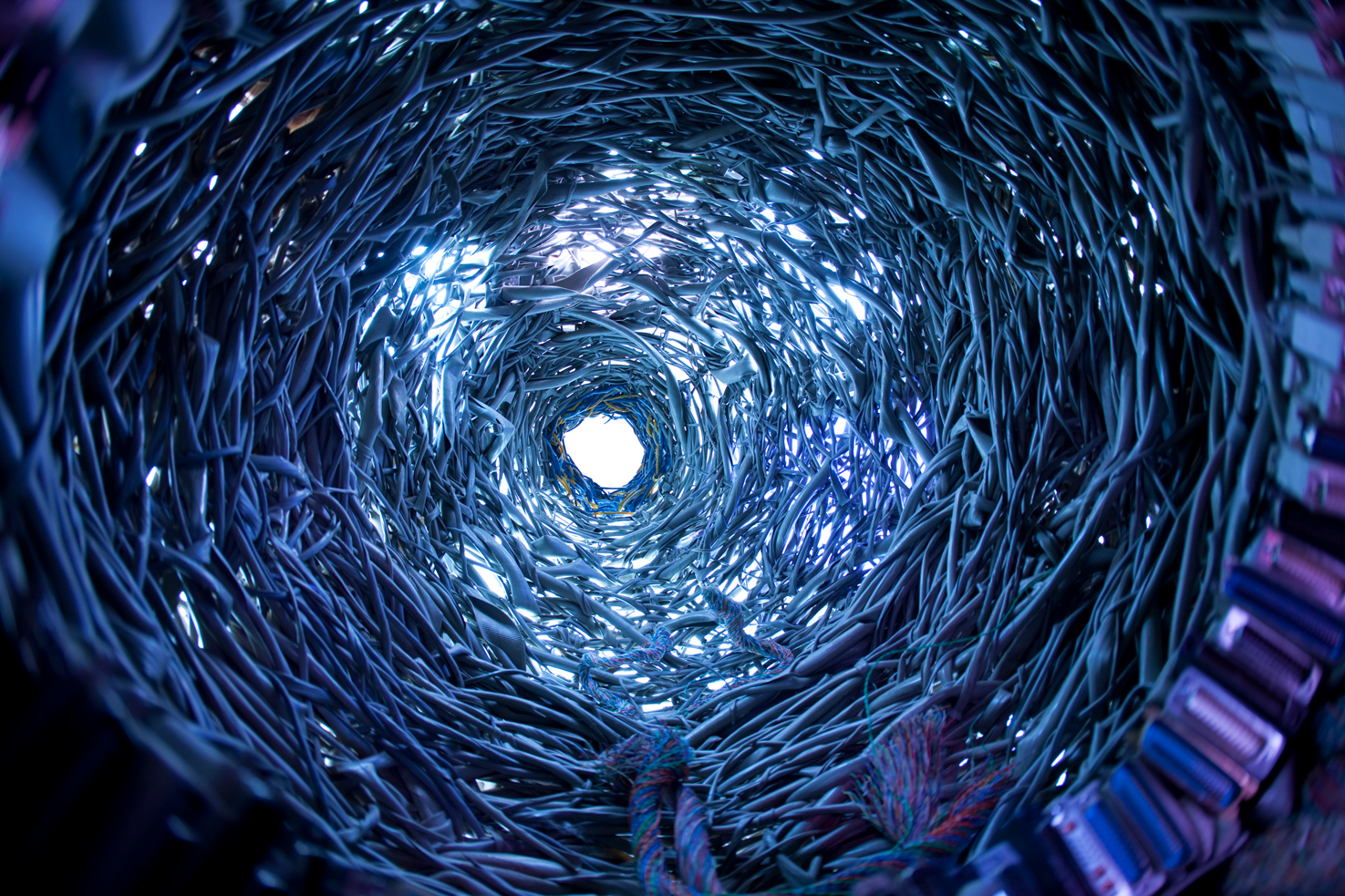
How does augmented reality or mixed reality play into that same spectrum? I think that our imagination is a little bit beyond the technical capabilities as it pertains to right now but over the course of the next five years things are going to change.
Well, the difference between where augmented reality is today and where it's going to be five years from now is the same as Internet browsing was on your Motorola flip phone or your BlackBerry compared to Internet browsing on your iPhone. The device itself that portrays the content is so much more advanced. Five years from now the Apple headset is going to completely bust open the industry. I've seen it. I've gotten to experience it. The HoloLens 2, the Magic Leap 2 that is going to be coming out. The technology is there and the Apple product is going to be amazing and the Oculus AR product is going to be amazing. The physical world is going to be a canvas for the Internet, so instead of the Internet being on the tiny little window on our phone, we're going to actually step out into and inside the Internet. From an entertainment perspective, there's a ton of things that we can do with that.
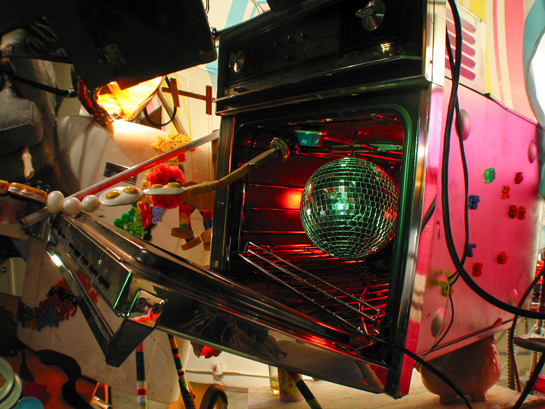
There's storytelling all over the place. I often say that the characters you are reading about today or the characters that you watch on TV or the characters you watch on film today are going to be the characters that you actually meet in person in the next 5 to 10 years. Storytelling will be in our lives. A character will ring my doorbell and I will go out to coffee with them and learn the progression of the story by sitting down at a coffee shop with them, not because they're actually physical characters, but because they are artificial, intelligent, 3D-rendered AR characters that I've opted into. I bought it into their storylines. I think what's exciting about AR is that there's going to be hundreds of experience channels that you can choose from and you might choose the Meow Wolf experience channel, you might choose the Disney experience channel. Any one of those experiences will be an overlay on top of the pre-existing infrastructure of the physical world that exists. Basically you're opting in to a certain slice of life, of experience, a full 360 experience
That's almost like going to your TV Guide and switching the channel up or down through all of the infinite channels that you can experience..
Exactly. I think the level of filters are going to be endless. If you want to be in the film noir channel you can turn your entire city into film noir.
I'd say that would be categorized as a transformational experience.
We're entering a dream. If you really want to get metaphysical about it. We're entering a dream and we're moving more and more into our imagination. The trajectory of that is psychotic. If you thought, five thousand years ago how many things were created from our imagination versus today. We are just surrounded. Everything around me, everything around you, has been made from the imagination. We're just continuing that process and we're burning massive amounts of fossil fuels to do it. We are obsessed with bringing our imagination into existence and we're willing to kill the planet to do it. It's this weird, weird place that we're in. We almost want to create a new reality that is the instant manifestation of our imagination and we're willing to sacrifice all of our physical resources in order to get there.
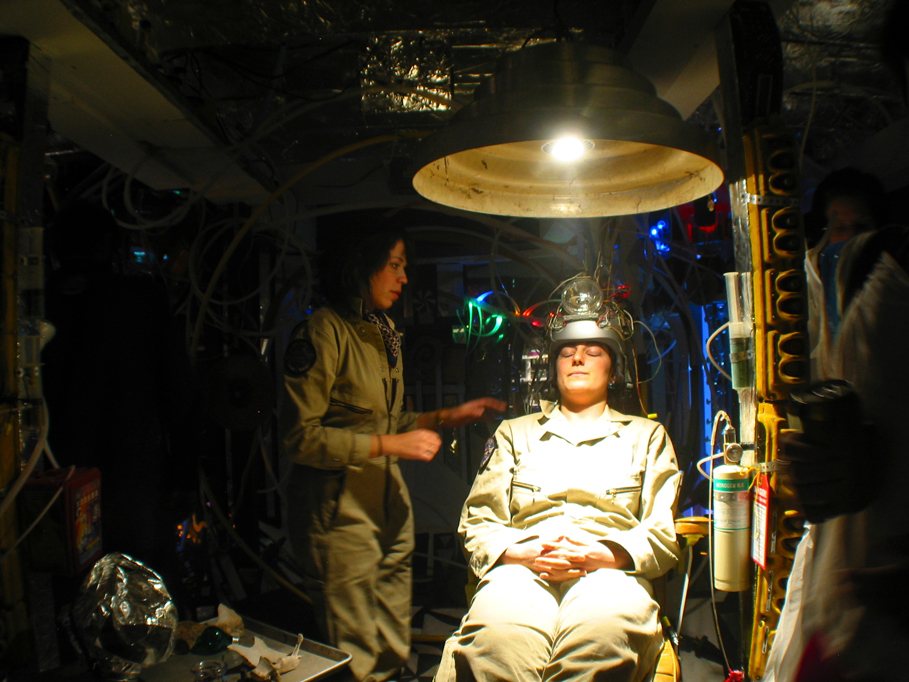
There is a downside to technology accelerating so quickly. I think it's really important for people that are designing for the imagination to be aware of the decisions and potential impacts. When we're creating something for others it just ripples out and has a force of its own. Can you share a little bit about Spatial Activations as well as some of the deeper nuances of the social mission that you and your team are working on?
Spacial Activations is a consulting firm that is focused primarily on the creative development phase of any project. If someone has a physical space, whether it's a municipality, a real estate developer, a shopping mall operator, an amusement park, whatever, if you have a physical space and you know you need to do something different and really attract people, that's what we like to help firms with. That is done through art and events and spatial computing and marketing, even food. There are various ways to be able to attract people to a space. We have a group of consultants and experts in all of those areas. What it starts with is a community-centric design, human-centered design. The old strategy of copy paste everything and put it into another community and they're going to love it like the Applebee's or Chili's, people just aren't buying it anymore. Localization and a more direct response to what local communities are seeking is a lot more attractive. I think that for us when you think about activating space, it's about who you are activating space for and then actually learning about who you're activating space for and getting feedback and gathering those folks.
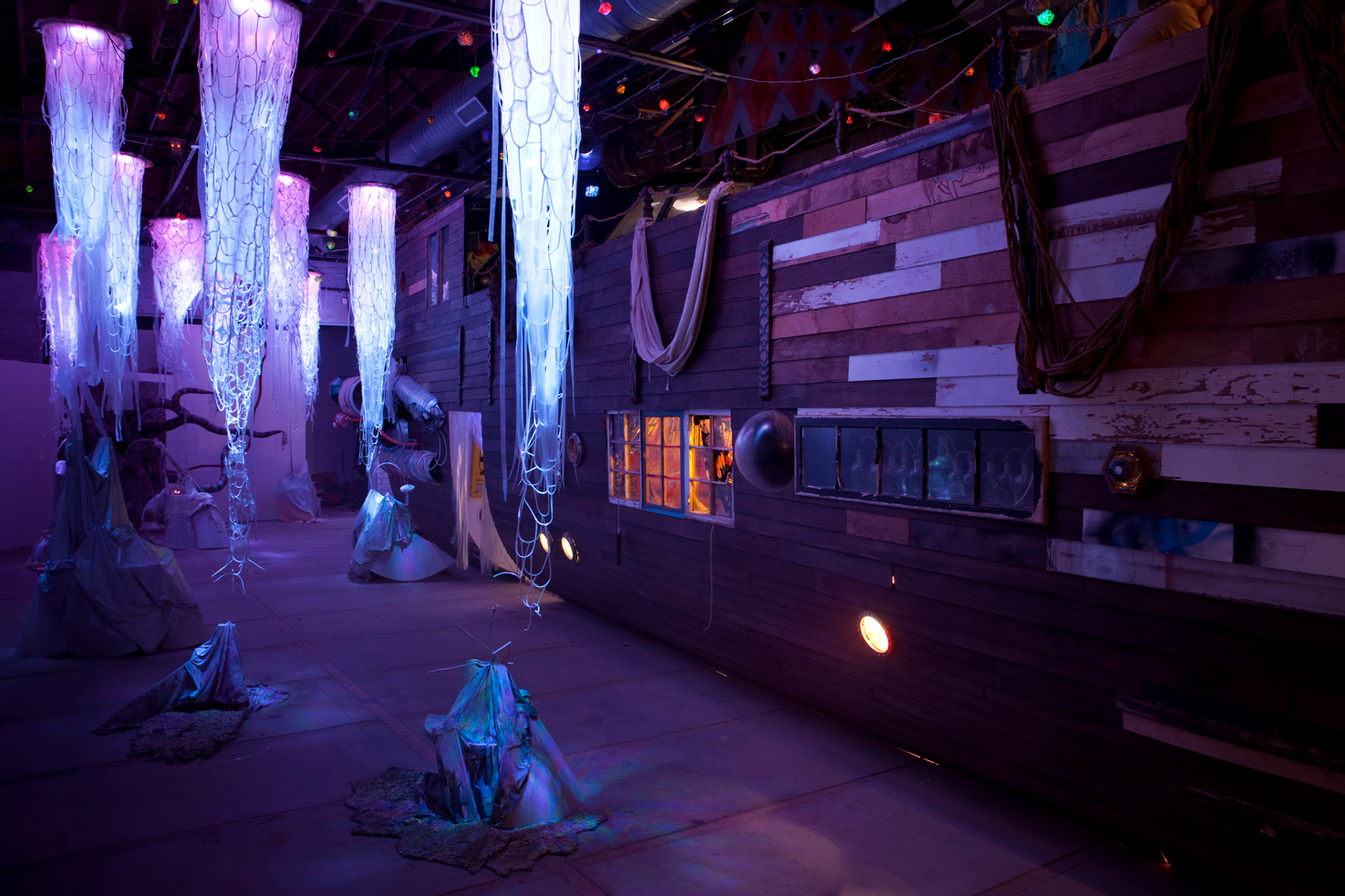
Once you do activate that space, having programming attached so that people can actually come together. Which our strip malls failed to do in a big way. The parking lot is the closest thing we get to a common space. So that, I would say, is probably the top social mission for us: how do we bring people together? From a sustainability perspective in the environment, climate change and burning fossil fuels and destroying our planet I have a different picture of it. I'm not in a place of straight dogmatic thinking or black and white thinking. Do we need to make drastic changes to save our planet? Yes, we do. Many of the tools that we have to make those drastic changes were produced through the burning of fossil fuels. We can't capture the energy of the sun without making solar panels and all the technology that it took to get us there. Our past got us to where we are now.
We have the capability to have renewable and sustainable energy. I don't need to make an enemy out of oil but we do need to promote more sustainable practices if we want to continue to survive on this planet. Everybody should be thinking about that. It undermines all aspects of our life. I believe that humans are one of the vessels of consciousness and we have an opportunity to do a really amazing blossom, like an amazing bloom, we're kind of this organism that has an ability to do an amazing bloom. If we don't have the resources to continue our growth, and if we don't treat our resources properly, then we're never going to get to that bloom. And we're getting there. I think that there is going to be an opportunity for us to truly, as an entire consciousness, bloom and but we might run out of resources before we get there. That would be a shame.
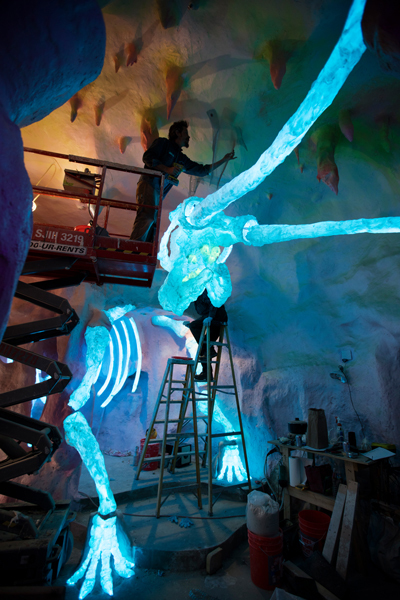
When I think about all the advancements in every single industry that we touch as a company, there are so many different massive leaps that have happened over the last several decades. I think about education and the way that I learned and my parents learned and my kids are learning now. Not a whole lot has changed outside of introducing Zoom and I'm curious what your take is. What is, what could be. Let's just imagine for a moment here what could the future of education be as it pertains to creating environments that touch on these things in ways that people might resonate with.
I don't know. I hated school, so I'm a tough person to ask about it. My parents are both public school teachers. My sister's a public school teacher. My brother in law is a public school principal. But I couldn't handle the public school process. So, I would say if there are two things that I wish that we taught my kids, one would be how to be passionate and why to be passionate. And the other would be how to have vision and to create from vision. Those two things. I want the education system to shift towards a future-based system, one that's about what we can become. The two things that you need in order to manifest yourself into being is a vision and the ability to understand what vision is and what work ethic is to get there. It’s the vision plus passion that gets those visions complete.
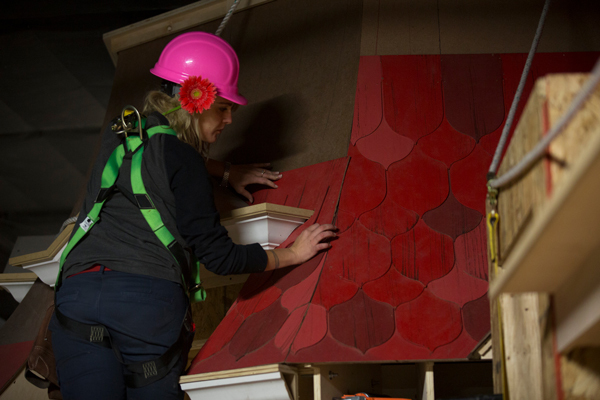
I love that. Your projects are big, they take a lot of time, they take a big army of people. There are so many different departments. Maybe you can walk us through how involved the projects are. I'm also curious as to the most fun aspect for you as well as some of the most challenging things that you might not think about as somebody that's in this space.
As far as our process, collaboration is key. You can't make the type of things that Meow Wolf makes without a system that facilitates and supports collaboration. It’s more of a process of collage than it is a process of top down scripting or top down design. So you've got to pull from a lot of different voices and then you have to piece it together. We often say that the conceptual infrastructure and the physical infrastructure have to be solid. Then various component parts can fit inside of that infrastructure and be curated. A small amount of people come up with the early phase infrastructure, the conceptual infrastructure of a project, and then a large amount of people start to fill in what's inside of those conceptual walls and influence what those walls are. Then it just goes back and forth until you end up with a finished product that feels congealed and tied together. We also think in layers and we don't segment out linearly, we have segments by layers. So in any given space, we want to have multiple layers of potential experience. We don't want one to be necessarily dominating another. We don't want the story layer to be so dominant that the play layer or the visually stunning layer or the intellectual layer is drowned out. So we just kind of blend it and make sure that it all has a relatively shared space. A lot of people will say “Here's your story room, here's your intellectual room, and segment like that but, for us, it's all there and layered, and stacked.
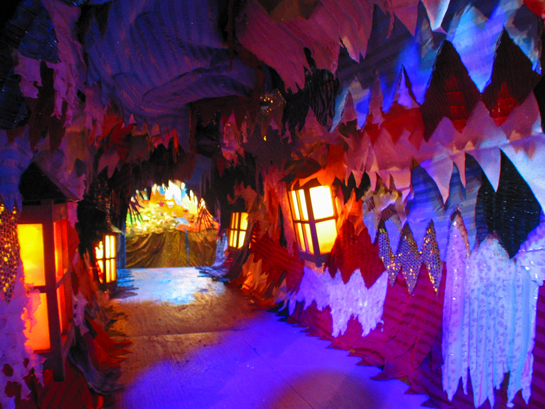
What can we look out for in the future?
The Meow Wolf Vegas project just opened a couple months ago and it's just truly phenomenal. It's probably the best immersive art experience that exists. On an artistic level, on an art world level, it has some of the most gorgeous pieces of art that will debut in 2021. We'll be opening Denver at the end of the year and that's going to take it to another level. So of course, I'm going to rep what Meow Wolf is doing because I think what we are doing is the cream of the crop.
So awesome. Thank you for the time.

Meow Wolf is an arts production company that creates immersive, multimedia experiences that transport audiences of all ages into fantastic realms. meowwolf.com
Britelite Immersive is a creative technology company that builds experiences for physical, virtual, and online realities. Read more about our capabilities or view our work.
